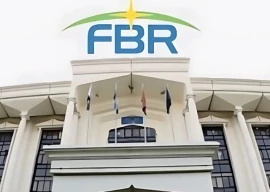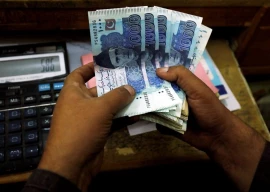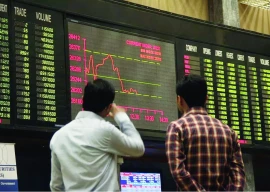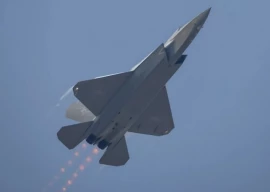
The agriculture sector is anything but insignificant. With a quarter of the GDP coming from it, 8.5 million households (28% population) depend on agriculture, out of which 7 million households are small farmers (holding less than 2 acre). Close to 45% of the labour force and most of our exports also rely on agriculture.
Agriculture spending relies heavily on foreign loans
To top it all, we are sitting on a ticking population time-bomb. Therefore, the sector deserves much more than the incentives given, which are indeed good but only for the short-term.
The farmers of our country need tools, assistance and technology, which will enable them to take quantum leaps. As we see elsewhere in the world, quantum jumps are only possible through technology. It is well known that in some countries technology is playing a colossal role in the development of agriculture. These range from simple tractors and threshers to the controversial genetic mutation of crops.
ICTs in agriculture
Traditionally, agriculture is practiced by performing tasks such as planting or harvesting, against a predetermined time schedule. Up to recent times the ICT-based help available to the farmers was mainly in the form of weather forecasts and information about seeds, fertilisers, and market prices.
With the rapid development of ICTs now it is possible that relevant data and information is collected, stored, analysed and disseminated to improve agricultural productivity. New techniques in collecting real-time data on weather, soil and crop maturity have now been invented.
Dark side: Agriculture pulls down GDP growth
Even the earlier remote sensing techniques via satellites are being augmented by low cost drones which gather data flying under the cloud cover. These drones, equipped with sensors, utilise technology and microprocessors developed originally for smartphones. Sensors are also planted with crops to give wireless real-time information about nutrients, salinity levels, soil temperature and moisture levels etc.
All this collected data is then zipped to cloud-based computer system for processing and converting the results into actionable steps. This has come to be known as precision agriculture.
Livestock and ICTs
Similarly, in case of livestock, which is a ‘close relative’ of agriculture, data is collected and analysed to improve health and output in animal farms. Punjab government has an ongoing project in which it is ear-tagging and mapping livestock in the province to establish animal registration and identification system. Such systems help in disease surveillance, reporting, diagnosis, control, quarantine and vaccination programs.
More innovative services are also being developed in various countries. For example, Saad Ansari from Pakistan is a co-founder of a start-up. Connecterra. in the Netherlands, offering end-to-end solutions based on wearable sensors for the animals, to monitor the herd in real-time, allowing farmers to optimise breeding cycles and improve milk production. Supported by Microsoft, the start-up Connecterra was chosen as the Alpha winner at Web Summit 2015.
All such data collected is also very useful for the government itself, because data collection, monitoring and evaluation are activities that the government has to do as part of development process anyway.
After collecting data, it has to be processed at the back-end using cloud based platforms, and then providing necessary guidance to the farmers. Providing guidance to the farmers is yet another challenge, owing to lack of literacy among most farmers. This challenge can be overcome by transferring information to the farmers via video clips transmitted over 3G/4G networks in the ‘last mile’. Whatever little audio is still necessary, it is dubbed in regional languages.
ICTs in other areas
However, not only for the massive amounts of data from the crops and livestock, there are other multiple sources of data and information that need to be transported to/from rural areas – for governance, education, health-care, commerce, branchless banking, and so on – requiring large capacity data pipes. For this purpose, there is only one solution: optic fiber cables.
Economic Survey 2015-16: Off target, once again
It will take some years till the optic fiber connectivity extends its reach far beyond the tehsil/taluqa (sub district) levels to at least union council level. Our neighbour is catering to this requirement by connecting 250,000 Gram-panchayats with optic fiber cables, using the money from Universal Service Obligation Fund (USOF).
Using ICTs for development of rural areas can enable us to make quantum leaps in economic development. Therefore, we must, at the minimum, provide high-speed connectivity, easy-to-understand relevant content and digital literacy training in the villages.
Adequate funds for such activities for rural areas are available via Universal Service Fund (USF). Nowhere are those funds needed more than out there in the fields.
The writer is former CEO of the Universal Service Fund and is providing ICT consultancy services in several countries of Africa and Asia
Published in The Express Tribune, June 13th, 2016.
Like Business on Facebook, follow @TribuneBiz on Twitter to stay informed and join in the conversation.
















COMMENTS
Comments are moderated and generally will be posted if they are on-topic and not abusive.
For more information, please see our Comments FAQ